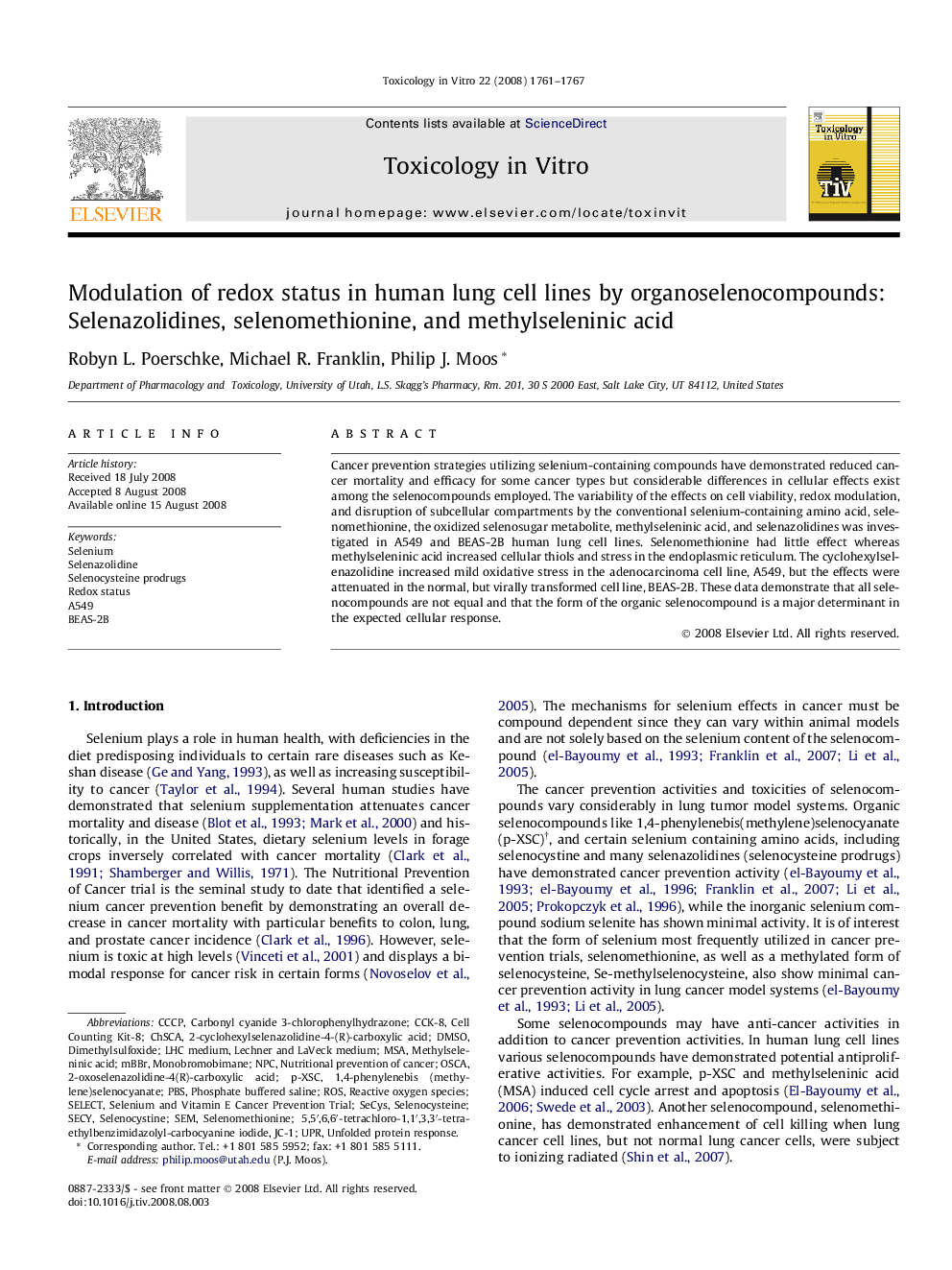| کد مقاله | کد نشریه | سال انتشار | مقاله انگلیسی | نسخه تمام متن |
|---|---|---|---|---|
| 2603750 | 1133833 | 2008 | 7 صفحه PDF | دانلود رایگان |

Cancer prevention strategies utilizing selenium-containing compounds have demonstrated reduced cancer mortality and efficacy for some cancer types but considerable differences in cellular effects exist among the selenocompounds employed. The variability of the effects on cell viability, redox modulation, and disruption of subcellular compartments by the conventional selenium-containing amino acid, selenomethionine, the oxidized selenosugar metabolite, methylseleninic acid, and selenazolidines was investigated in A549 and BEAS-2B human lung cell lines. Selenomethionine had little effect whereas methylseleninic acid increased cellular thiols and stress in the endoplasmic reticulum. The cyclohexylselenazolidine increased mild oxidative stress in the adenocarcinoma cell line, A549, but the effects were attenuated in the normal, but virally transformed cell line, BEAS-2B. These data demonstrate that all selenocompounds are not equal and that the form of the organic selenocompound is a major determinant in the expected cellular response.
Journal: Toxicology in Vitro - Volume 22, Issue 7, October 2008, Pages 1761–1767